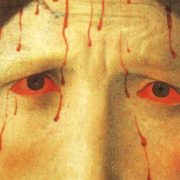Reproductive Rights?
ArtWatch has previously reported on the way in which museums exert their power to suppress discussions in public forums that do not favor their actions or points of view.
Shortly after reporting on the MoMA’s possession of an Egon Schiele painting claimed to have been looted by Nazis during WWII in December of 2004, David D’Arcy, a long-time contributor to National Public Radio, was suspended, supposedly for not presenting the issue in a balanced way. ArtWatch continues to be concerned that museums, with their powerful boards of directors and their far-reaching influence, exert an undue pressure on the media to report favorably on the issues that affect them.
While that may be the case for large institutions, what is surprising is that smaller ones will also use the means at their disposal to limit discussions that they do not deem favorable to their interests. An example can be found perhaps were one might least expect it, in the small Italian town of Livorno.
Professor James Beck was recently asked to review an exhibition at the Metropolitan Museum on Fra Angelico (October 2005-January 2006) for Apollo Magazine. Critical of the museum’s attempt to arbitrarily re-write the chronology of the artist, the review called into question the value of the exhibition on a scholarly level.
As the review was being prepared, the Press Office at the Met had to be contacted in order to obtain permissions to reprint images from the show for the review. One painting considered for publication in Apollo was Christ Crowned with Thorns owned by the Parrocchia di Santa Maria del Soccorso (Livorno). Egle Zygas, Senior Press Officer responded that Livorno’s Museo Civico Giovanni Fattori (which has the work on deposit) would only release the image on two conditions: “one, that the attribution not be questioned; and two) that no disparaging comments be made about the work. If those conditions are fine with you, we are allowed to release an image to you or to your editor.”
The work ultimately appeared in the review, as a full-page color illustration, where it was used to demonstrate the chronological inconsistencies inherent in the exhibition. The incident, however, is chilling for the effect it could have on a scholar’s ability to discuss a work of art. If the thesis of an art historian’s argument is not advantageous to the institution that owns the rights to the work, will they be denied permission to reproduce the images necessary to make their case?


